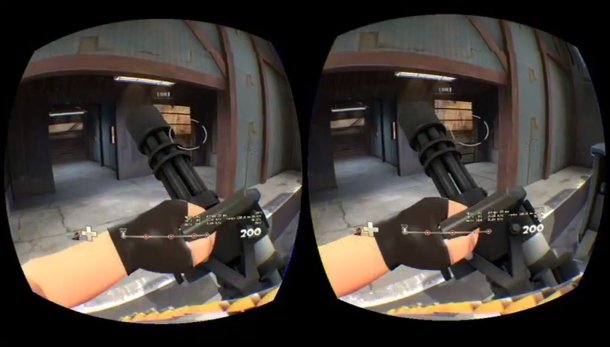Valve on Virtual Reality: "it will take years, if not decades, to fully refine"

Those who've tried playing Team Fortress 2 with the Oculus Rift largely agree that it's a game changer - albeit with resolution and focus problems. Yet Valve's tech-brain in chief, Michael Abrash, talked at GDC extensively about the challenges of developing working VR and especially AR systems, and what exactly technical advances we'll need to get a more satisfactory VR system. Though the Oculus Rift has impressed nearly everyone who's worn it, Abrash suggests that it'll take some time before we escape the technology's compromises.
“Many years ago I read Neal Stephenson's Snow Crash and I realised that much of it was drawing on virtual reality, and really wanted to be involved in making it happen,” says Abrash, which motivated him to move to Dallas and work on Quake with John Carmack. Since then the prospect of the Metaverse (Stephenson's immersive 3D world) has advanced rather slowly, until very recently. Abrash points to improvements in flat-panel displays, batteries, mobile CPUs and GPUs, wireless tech, miniaturised cameras, gyroscopes, accelerometers, compasses, projectors, waveguides, computer vision and tracking hardware as key technologies for modern virtual reality. And, of course, the true 3D games that he started with Quake, are there to supply the content (though the game I really want to try is Dear Esther).
We have now have a working VR, in the form of the cheap, light and ergonomic Oculus Rift, which Abrash is relatively positive about. “When a rocket goes past you in Team Fortress 2 on the Oculus Rift, it's like God on steroids.” That sounds _relatively_ positive to us. However, the Rift is only a start, because there are many problems it ignores or dodges. For example, “The math for resolution at wide fields of view is brutal. If you take the (best available display for the next year) and apply it across a hundred degree field of view, you end up with a pixel density that's less than 1/50th of a phone held at normal viewing distance.” Ouch. “The bottom line is that, as with 3D, it will take years, if not decades, to fully refine VR – and AR is even harder.”
So, with a series of spacetime diagrams that befuddled the less-technical brains in the audience, Abrash showed that there are fundamental disadvantages to all commonly available display technologies. Tracking in VR, and especially AR, is extremely difficult because of problems like colour fringing and blurring caused by body, head and extremely-rapid eyeball movements. Similarly, the combined latency of the device can be no more than 20ms total for tracking, rendering, transmitting to the display, and getting photons to come out of the display – and to stop coming out. The Rift in particular doesn't track sideways motion, such as strafing – and a failing correspondence with the real world is one of the things that makes players nauseous.
VR may well be the future, and the Oculus Rift offers a thrilling glimpse of it, but it seems there's a lot of work to be done before that future arrives.
For more information, go check out Abrash's blog on the technology .
The biggest gaming news, reviews and hardware deals
Keep up to date with the most important stories and the best deals, as picked by the PC Gamer team.

